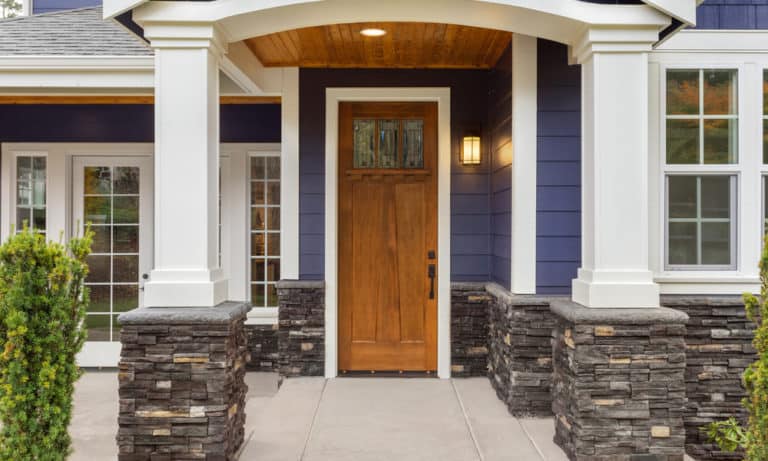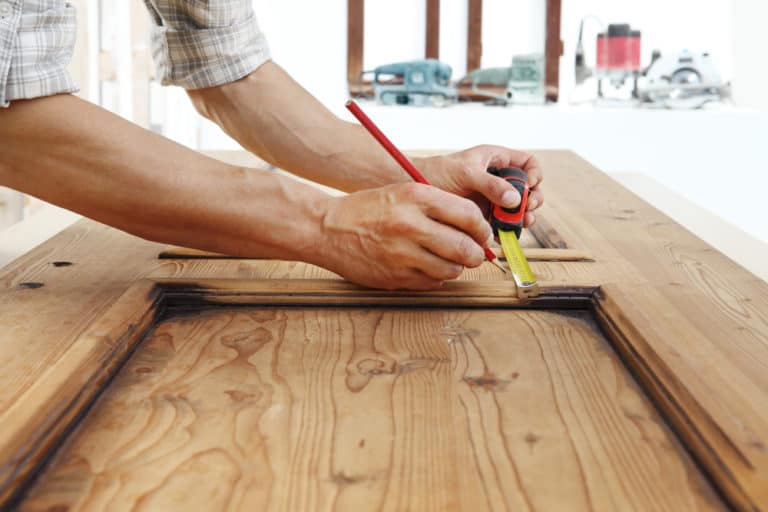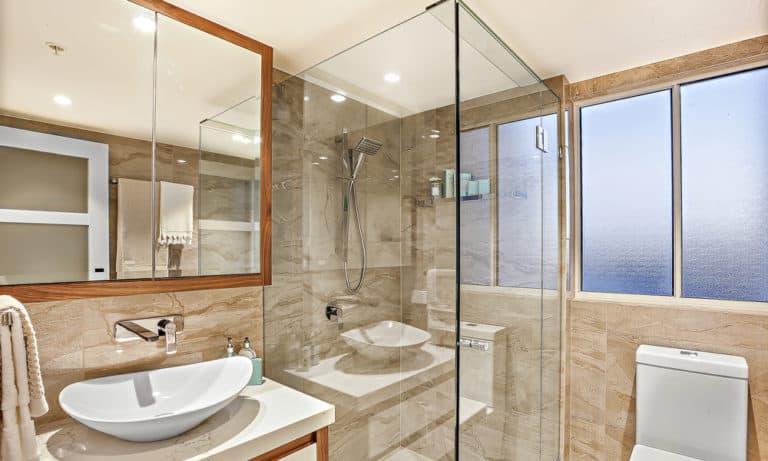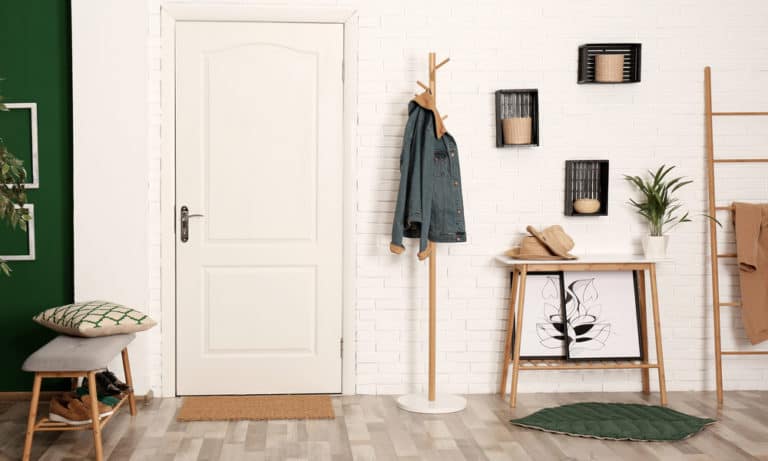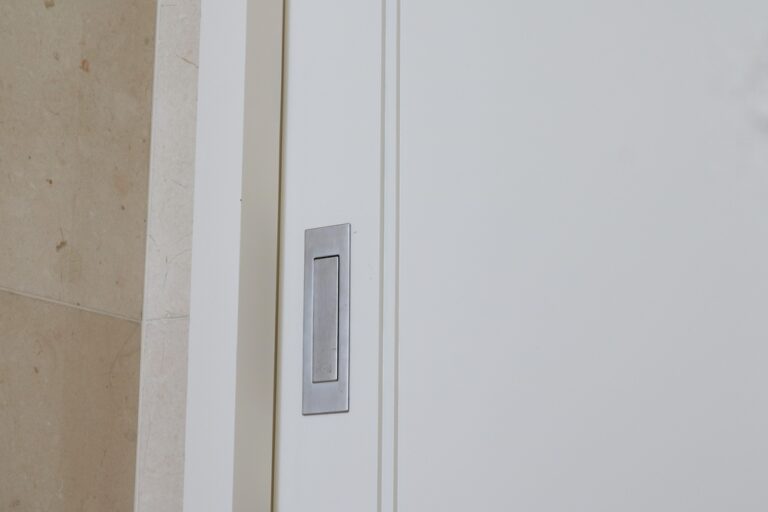Replacing your old door with a new one can be a simple way to update the look of your home. When you are installing a new door, it is crucial to get the measurements right and leave the right amount of space between the door and the frame. What is the recommended space you should have between the frame and door?
Fortunately, it is quite a straightforward job to install a new door and most people can do it themselves, even those with a minimal DIY experience. The key is to get the measurements right to achieve a perfect fit and this article will help you with that.
Read on to find out how to take measurements and trim the new door to ensure you have left enough space between your door and door frame.
How Big Should The Gap Between The Frame And Door Be?
As a general rule, there should be a ⅛-inch space between the frame and door on both sides of the door and at the top. This rule applies to both exterior and interior doors. Interior doors should have a gap between ½ and ¾ of an inch on the bottom. There should be minimal space between the floor and an exterior door to prevent drafts.
Why do You need to Leave Space Between The Door And The Frame?
When you are installing a new door in the door frame, you need to choose the right door for the frame to ensure the door hangs properly. If the door hangs improperly, you will have issues with the opening and closing of the door. Sometimes, the door may fail to close at all.
Terminology
There are some terms you need to be familiar with when installing a new door. These terms are related to specific areas between the frame and the door. The gaps that run along the sides of the door are called stile clearances.
The term head clearance or reveal refers to the space at the top of the door, while the terms bottom clearance and floor clearance are used to describe the gap between the door and the floor.
The Size of The Frame Compared to The Size of The Door
Your door frame should be 3/16 inches wider than your door panel, which is sometimes called a door slab. The 3/16 measurement includes the ⅛-inch gap that needs to be left between the strike jamb and the door. It also allows for a 1/16-inch clearance on the hinge jamb.
The frame needs to be between 1/4 and 1/2 inches taller than the door to ensure adequate head clearance. If you are fitting an interior door, there also needs to be a gap at the bottom, but not if you are fitting an exterior door.
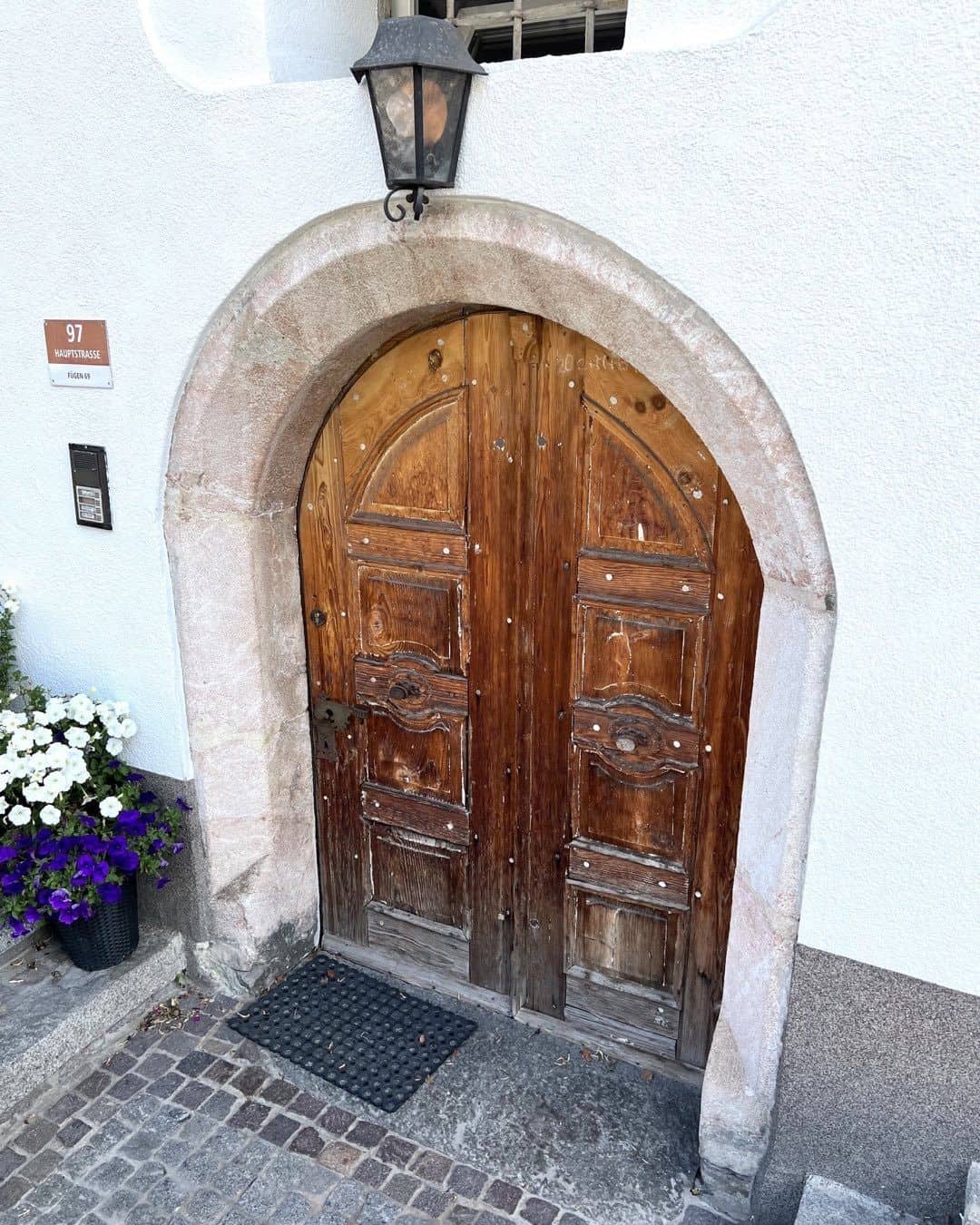
monigiezi
Important Notices
An interior door needs to have a ⅛-inch gap to the finished floor. If you have an unfinished floor, for example, you are putting down a wood floor, you need to account for that when measuring the height of the door. So if the finished floor will be 1/2 inch thick, you need to add that to the ⅛-inch to get the right size gap.
As mentioned, with exterior doors, you want the gap to be almost non-existent as long as the door can open and close freely. If you have any space between the floor and the door letting in drafts, you can use a door sweep to seal the gap.
How to Measure a Finished Opening
Before you purchase your new door, measure your existing door opening to get the right size door for your frame. You don’t need any other equipment than a pencil and paper for recording and a tape measure.
Measure your door at the bottom, middle and top to get its width. Ideally, the measurements should be the same, but sometimes they can vary a little, especially in old houses. Use the smallest measurement. Next, take three measurements for the height and use the smallest one if there are differences.
Once you have your measurements, subtract a quarter of an inch from the width to account for the gap between the door and the frame on both sides. Next, subtract half an inch from the smallest measurement you got for the frame height. You now have the correct measurements for your door.
The Difference Between a Rough Opening And a Finished Opening
The instructions and gap measurements above only apply if you are fitting a new door to a finished opening. That means you already have a frame in place, for example, if you are replacing an old door. If you haven’t got an existing opening, then you are working with what is called a rough opening where you would first install a door frame.
If you are taking the measurements from a rough opening, you need to consider the space needed between the wall and the door. A rough opening is two to three inches wider and up to two and a half inches taller than the door.
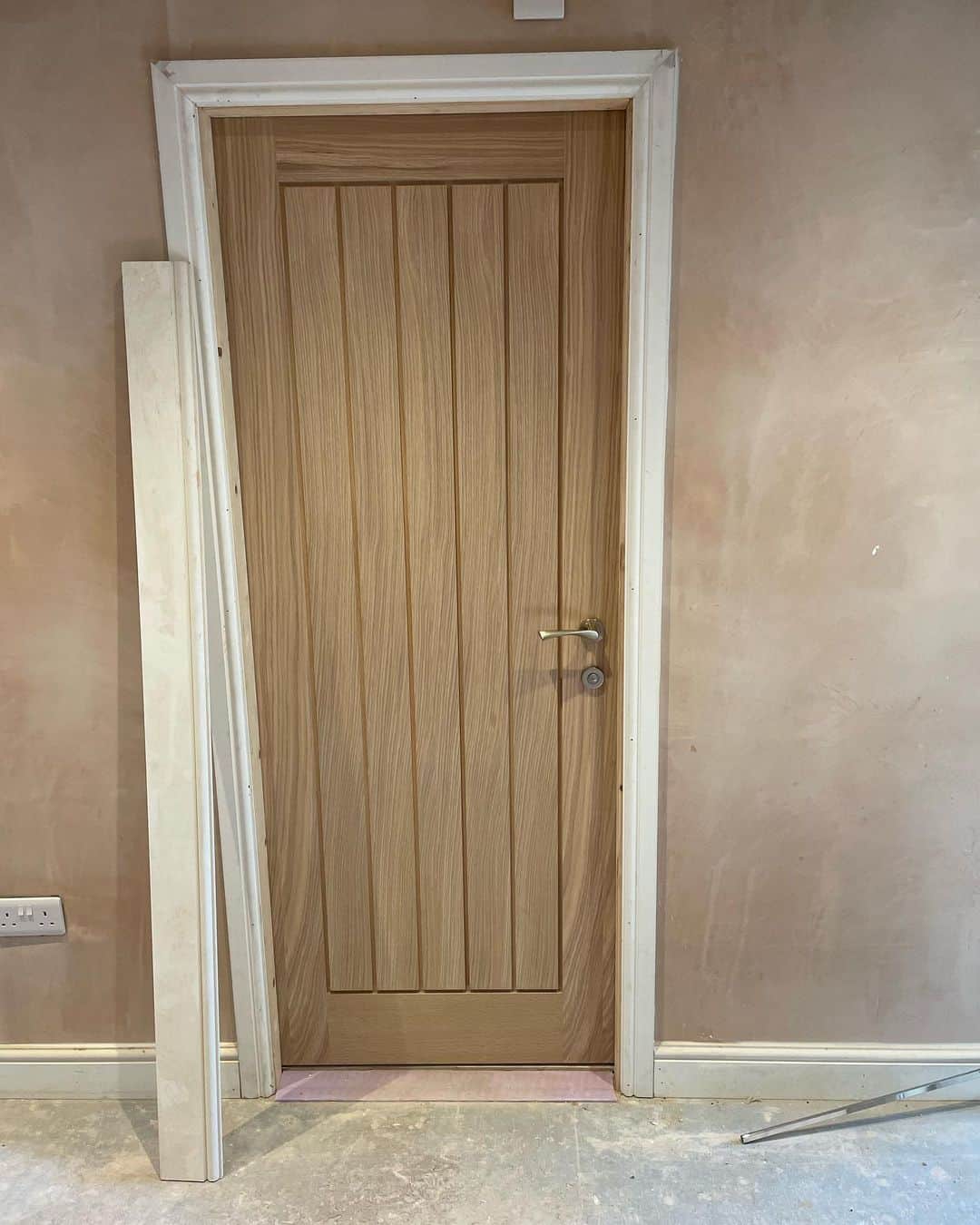
benclayton7
Using Your Old Door For Measurements
If you are replacing your old door, you have the option to measure the old door instead of the door frame. You should only do this if the old door is a perfect fit. That means there were no parts of the door that rubbed against the frame, there were adequate gaps all around, and you could open and close the door easily in all kinds of weather.
If you are measuring the old door instead of an existing frame, you should still take the measurements in three places for the width and three times for the height. If you get different dimensions, go with the largest measurements. Note that this is different from measuring the frame when you choose the smallest dimensions.
Trimming
Sometimes it may be necessary to trim your new door so it fits perfectly in the frame. When you are trimming the width, ensure that you remove equal amounts from both sides of the door. If you need to trim the height, cut from the bottom.
Use a pencil and a straightedge to trim your door to ensure a straight cut. Mark it first with a pencil, then score it with a knife. Scoring it will prevent the material from chipping. Position your door on a sawhorse and the blade of the saw on the cut line’s waste side. If you only need to trim a tiny amount, use a plane instead of using a saw.
When you have finished cutting or planing, shim the door to check your trim. This means placing the door inside the frame. Wedge something thin, for example even pieces of wood or folded card, all around the door to center it. Check that there are no spots.
Fitting Your Door
When you have checked that the door fits perfectly inside the frame, you need to get the hinges and the door handle on the door. Your hinge should fit in the mortise, so check this first before you chisel the holes for them in the door or the frame. Internal doors usually have just two hinges, while external doors can have three as they are heavier.
After your hinges, you can attach the doorknob or handle by first tracing the lockset plate’s outline on the door. Ensure that this is on the opening side. Your doorknob set should come with a template you can use for the tracing or use the plate itself to outline the shape.
If you are painting or doing any other cosmetic changes to your door, do this after you have finished drilling holes for the screws but before you hang the door.
When you have finished with the hinges and any decorative jobs, you can hang the door. Fit the door into the frame, interlacing the hinge knuckles. Tap the hinge pins with a hammer so they are secure in the knuckles. Close and open the door to check it moves smoothly. Finish by installing the doorknob on your new door.
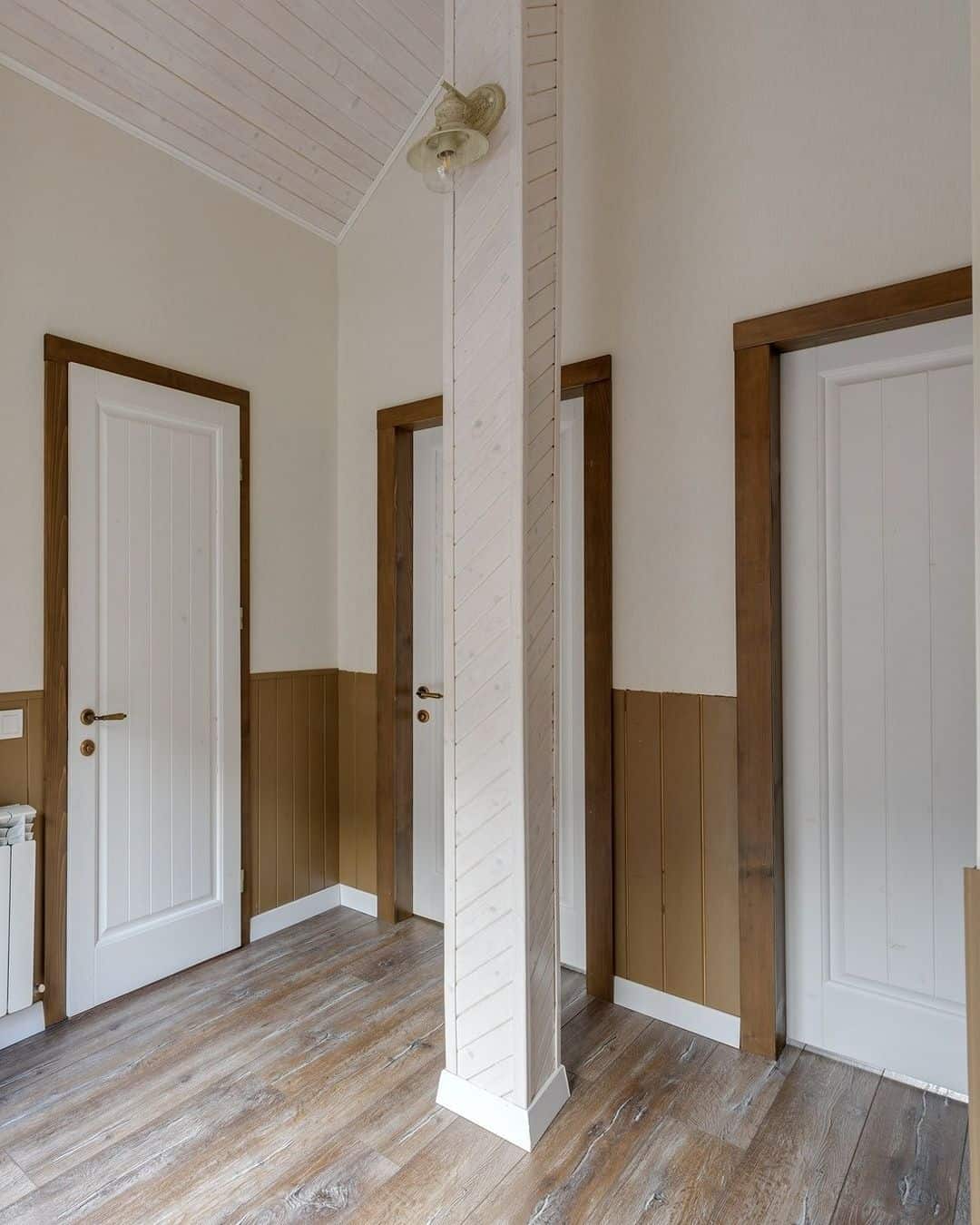
rqcarpentry
Summary
If you are installing a new door in your home, it is important to get the measurements right before you purchase the door. When measuring, allow for gap tolerances all around the door to ensure it opens and closes easily.
The space between the door and frame is the same for interior and exterior doors on the sides and the top of the door. The gap at the bottom of an exterior door should always be as small as possible to minimize drafts.
If there is anything you would like to know that hasn’t been covered in this article about the space between the door and frame, write your questions in the comments section.

